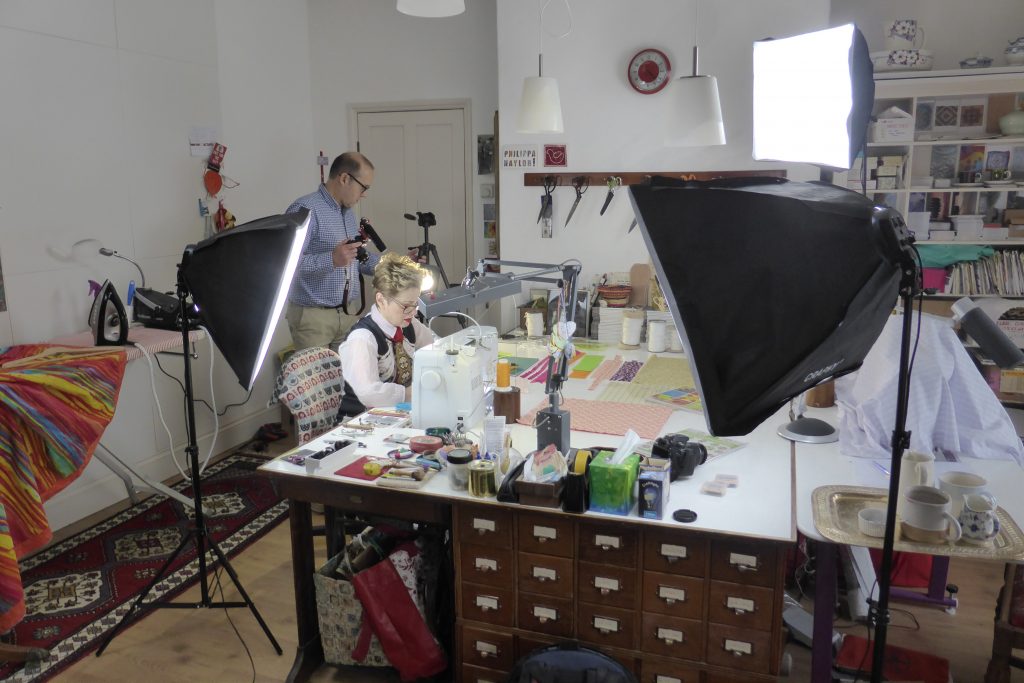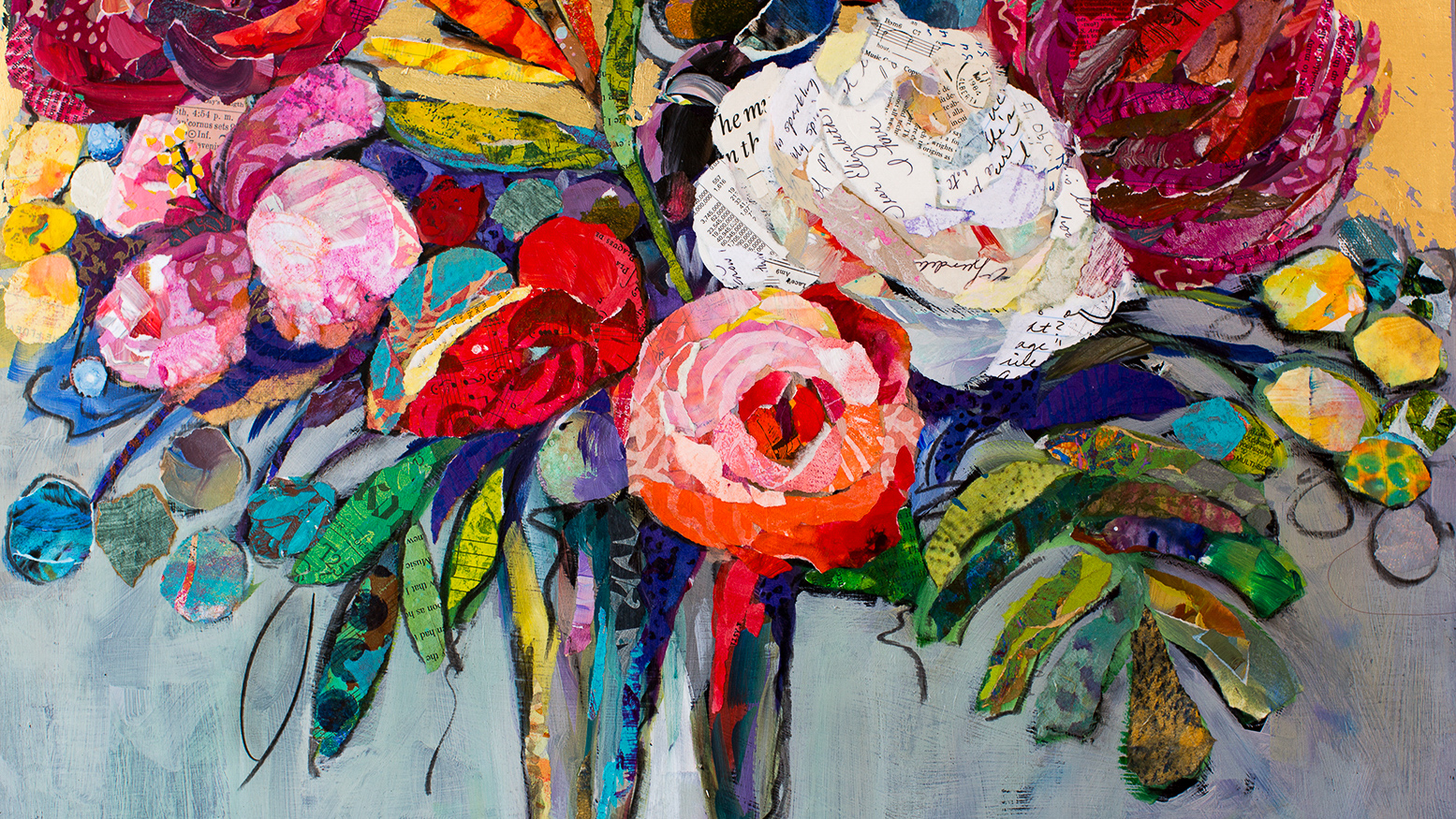Natalya’s art is an extension of her commitment to using recycled and repurposed materials, a lifelong advocacy. Her detailed works are nuanced and reimagined images inspired by the lines of the urban environment. A close examination of Natalya’s art reveals delightful and unexpected combinations of materials as diverse as vintage lace, plastic sheeting, and candy wrappers, layered and collaged with machine and hand stitching.
Natalya will be bringing her Nature in Plastics workshop to our studio from December 2-6 this year. In this three-day workshop, you’ll learn a creative way to craft an art quilt while also cleaning up our planet by using single-use plastics as your fabric. They come in a myriad of colors, thicknesses, patterns and even textures, and can sewn almost like fabric.
In advance of her workshop, we asked Natalya a few questions about her work and approach to teaching.
Q: How did you first begin creating art with the medium(s) you’ll be using in your workshop?
NKA: I was first attracted to the colors and translucency of the plastic bags years and years ago. Can’t pin an exact date on it, but I started saving them for a while before it occurred to me to start stitching them. I think I must have been looking for a specific color in my fabric stash and came across it in a plastic bag. I learned quickly that most plastic bags are very fabric like to stitch through and the multiple stitched layers are quite sturdy. I thoroughly enjoy layering the bags and getting new shades and colors due to the translucent nature of most plastics.
Q: What are your biggest challenges to creating art and how do you deal with them?
NKA: My biggest challenge is time and lack there of. How to deal with that? By taking every available minute. I am lucky to have my studio in a dedicated space in my home, so that I can leave whatever I am working on as is, and get back to it as soon as I can without having to take everything out again. I learned to work in small increments of time when my daughters were little and all I had was their nap times, and seems to have served me well. The only time I must have a long stretch of uninterrupted time for art is when I’m in the initial design stage, after that I can work in short bursts since I already know where I am headed.

Q: How has teaching impacted your personal art practice?
NKA: As I think most teachers will tell you, we learn as much from our students as they do from us. I always feel inspired by my students and that gives me an extra boost of energy in my studio.
My personal approach to art is called “go with the flow”. I let my artistic intuition lead me through the work; lack of certain materials teaches me to be inventive; time constraints lead to reevaluation and streamlining of the process or the design. The same approach helps in teaching – I am able to adapt to my students needs, knowledge levels and the time constraints of the workshop, and we figure out the best way to get the most out of each class.
Q: What advice has influenced you?
NKA: “The routine is as much a part of the creative process as the lightning bolt of inspiration, maybe more. And this routine is available to everyone…. Creativity is a habit, and the best creativity is a result of good work habits. That’s all in a nutshell“. ~Twyla Tharp (The Creative Habit)
“Don’t wait for inspiration, it comes while working“. ~Henri Matisse
“It is absurd to look for perfection“. ~Camille Pissarro
“When you’re terrified, embarrassed, don’t wanna put it down on paper, I’ve found through the years, usually you’re on to something good“. ~Erica Jong
Q: What’s one tip you have or trick you use for keeping your studio space organized?
NKA: A thorough cleaning after each major project is completed!


















